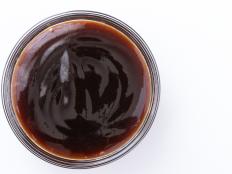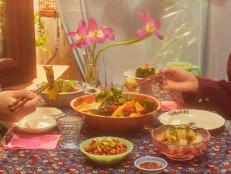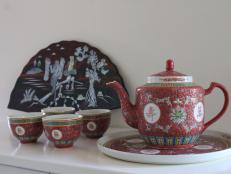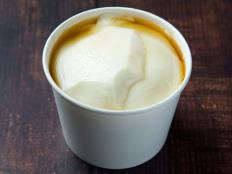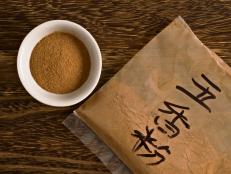Calvin Eng Ran Away from Cantonese Food – And Then Made It His Own
When you’re a minority in America, how do you keep the food of your heritage alive? Perhaps, the answer lies in a new Brooklyn hotspot, Bonnie’s.

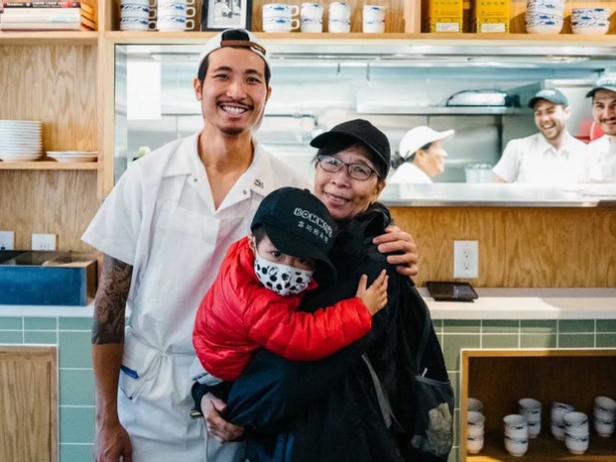
Ben Hon
As the saying goes, Calvin Eng got the name of his restaurant from his momma. Bonnie’s, which opened late last year in Brooklyn, takes after Eng’s mother’s American name – and has since been one of the hardest New York City restaurant reservations to get (trust me, I’ve tried an embarrassing number of times). The spot is known for homestyle Cantonese cuisine, food I was raised on. Bonnie’s menu boasts the food of my (and Eng’s) childhood – sauce-doused cheung fun; comforting, make-any-ailment-better jook; incomparably tender steamed whole fish; belly-warming gai tong (chicken soup) to finish off every meal.
You’ll also find more head-scratching things like a “Cha Siu McRib,” sweet-savory-familiar cha siu, a.k.a. an iconic Cantonese barbecued pork I ate weekly, crossed with an American fast food icon. The Chinese American in me is spinning with intrigue and glee. There’s also Fuyu Cacio e Pepe Mein. And Wun Tun En Brodo. Things that have always existed, but maybe never together – or at least, not on any Cantonese American restaurant menu I’ve seen.
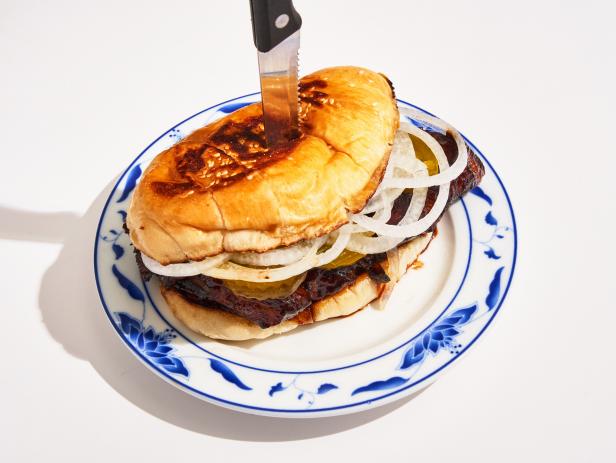
Adam Friedlander
When I got a chance to interview the James Beard Award Emerging Chef finalist, it felt like talking to someone I already knew. Rather than a subject whose story I wanted to discover and unravel, it felt simply like comparing notes. Oh my god, your mom does that, too? I have the same exact plate – I haven’t been able to find it anywhere else!
I probably wouldn’t be the first child of immigrants to tell you that getting your mom to send you an *exact recipe* of all your favorite dishes from home, exactly the way she cooks it, isn’t easy. So much of home cooking, especially in Cantonese cuisine, is comprised of inexact measurements and intuition – “little bit of” soy sauce; “some” salt, cook for a few minutes until “done.”
As an Asian American kid, learning how to cook and learning how to cook the food I grew up with, sometimes feels like diverging paths. I learned how to cook with the American internet and television. But I learned how to eat with my Cantonese American mom. I know how to cook pasta to a T (salt water always, cook to al dente), and the exact right buns for the perfect burger (it’s Martin’s Potato Rolls, for the record). It’s all thanks to American food media and easy, ubiquitous access to American ingredients.
Learning how to cook the steamed fish, cha siu fried rice, wontons and everything else that was on my mom’s dinner table takes work. Extra work: going the extra 30 minutes to the Chinese supermarket, texting my mom to ask what the right brand of sauce is, learning what exactly that pickled vegetable that I have been eating for 28 years in my Hong Kong macaroni soup is actually called. Finding the right recipe or tutorial, against a sea of everything-but, takes extra work. Cooking the food of your culture, especially when you’re a minority in America, is a conscious decision. If you don’t go searching for it, you lose it.
Calvin Eng did go searching for his heritage. After running away from Chinese food, he learned it and made it his own – by combining the itch for experimentation that any good chef has, his childhood and his mom’s home cooking. Through Bonnie’s, Eng has managed to make his mom’s precious rituals fresh – and therefore alive, thriving. I’m so excited for the future of Cantonese American cuisine. And after doing the ongoing extra work, and talking to Calvin – a fellow Asian American who mastered Cantonese food – I’m not so afraid of not being able to cook like my mom; but also, no longer afraid of not cooking just like her. I mean, Calvin did it, right?
Calvin and I talked about what our moms do, our love for their food and his journey to embracing his Cantonese heritage. Here’s how it went.
This interview has been edited for brevity and clarity.
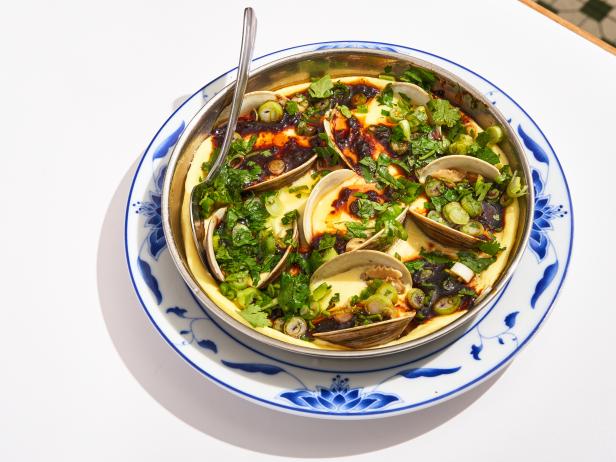
Adam Friedlander
On Steaming
What are the kinds of tools you saw your mom using while growing up, that you can’t live without now, as a professional chef?
A steamer rack – it’s definitely something I use today. And I think it’s something everyone should have. For a lot of people, when a recipe calls for steaming, it’s intimidating and not everyone knows how to go about doing it. But honestly you don’t need anything perforated. You ever see those vegetable steamers? It’s just like this basket looking thing, and you drop it in a pot. But that’s so unnecessary. All you need is water, that rack and then a plate [inside a wok or lidded pot or pan]. And the steam comes up to the top. The steam will always find a way out. You don’t need holes for it to really steam. I feel like it’s one game changer everyone needs who is gonna steam anything.
Is there any type of material for the plate that you put on top of the rack, that you can’t steam with? For someone who’s doing it for the first time?
Yeah, no plastic. But I like to use metal trays because they conduct heat well and they’re thinner. Versus like a ceramic. The metal trays, they’re just like super flat on the bottom, so it’s like even cooking with whatever you do. With ceramic, it’s usually wider at the top and opens up. So depends on what’s in there. If it’s more of like a bowl shape, things obviously aren’t gonna cook evenly, versus something flat and wide. Flat and wide is gold. These little things are perfect for steaming.
I had those metal trays, too. My mom sent me off to college with one. They’re so useful – great for casual meals – light and easy to clean. Have you been able to find these racks and trays in anywhere other than Chinese restaurant supply stores?
Chinese restaurant supply stores don’t even sell those things. I tried to buy those metal plates for the restaurant, ’cause we do the steamed egg in there, and then none of them sold it. So I buy them from the Chinese supermarket. And then the racks, too. And it’s more for home cooking, not restaurant cooking.
Does that mean this steamed egg dish is always made to order?
For that dish, definitely. In the restaurant, we have a lot of other cooking options and vessels that we could use that might be even better. But I wanted to use something that can also be served in the same vessel. If you grew up in a Chinese household, you know the iconic shape; you probably had these metal trays for every single dish on the table. Like, it’s nostalgic. If you know, you know. If you don’t, well, it’s still sick.

Adam Friedlander
What are things you’re always steaming at home?
When I was doing R&D for the restaurant at home, like when I was doing the McRibs, I steamed the ribs, like the dim sum steaming technique, and they get finished in the oven. I had to use the at-home steaming vessel setup. The rack, the plate and the claw to lift it all out. It’s one of those things that I did over and over again in my apartment – when I was doing R&D for that dish.
On the regular, my favorite way to eat fish is a steamed whole fish. And that’s one thing that’s kind of intimidating for some people at home, but really, it’s one of the easiest things in the world. Set it and forget it as long as you have the right tools.
The fish is huge – not everyone has a pot that big, and a plate that big. And you can’t do it without the rack, so I would do it in a wok if it’s a big fish. Use the same rack. Everything. Same plate. A wok and a wire vessel to just do it.
Steamed fish is one of those things that I need to learn to do on my own. Just hearing you talk about it, it sounds so easy. It makes me feel better about trying it.
As long as you’ve got the rack, the plate – it’s nothin’.
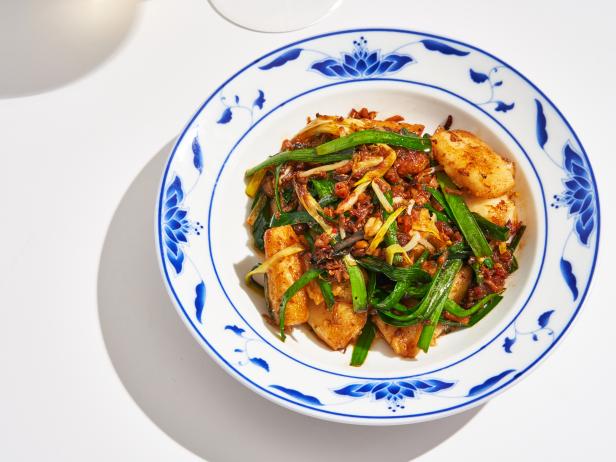
Adam Friedlander
On Cantonese Favorites
What is a Cantonese dish that’s not as well known that you wish more people knew about?
XO sauce. It’s a heavy, heavy dried scallops, dried shrimp type of sauce. It’s gaining popularity now – it’s kind of all over. A lot more like in fine dining, or like not Asian restaurants. That’s cool I guess, too. But I mean it’s such a crazy, flavorful, smart condiment and sauce that not a lot of people are familiar with. But it’s so good, and it works on so many different things.
What’s your favorite thing to put it on?
On simple, plain stuff. At the restaurant, we do XO cheung fun. So just liked tossed rice noodles in a wok, with XO sauce. That’s really fun and good.
Honestly, I’ll just throw it over rice, and eat it like that. It literally works on anything.

Adam Friedlander
On His Mom’s Cooking
When did you decide to pursue Chinese cuisine?
My pivotal moment wasn’t necessarily with [my mom]. I was in Chinatown [working at Nom Wah], and just being surrounded by all the shops that I used to go to as a kid growing up, made me want to dive deeper into the food of my culture and heritage because so much was changing around it. And it was a good opportunity to learn more about that stuff specifically. And like documenting stuff that my mom did, reading more, researching and eating. So I guess that was the pivotal moment in pursuing Chinese food.
But in terms of my mom’s influence on my cooking now, I wouldn’t even just say influence. I think she influences every decision, all the time, when it comes to Chinese food.
I definitely feel the same way about my mom. When you think of your mom’s home cooking, how would you describe it?
Overall, it’s healthy as much as balanced. You’ve always got a veg, a protein, fish, rice, whatever.
A lot of times, it’s simple. I wouldn’t say it’s easy; I don’t know if that’s a good way to describe it. Not easy, but simple, clean flavors.
Resourceful and smart. I always joke how Chinese people don’t – I mean we do, because we used to grow vegetables and stuff in our yard – but we would joke that we don’t eat with the seasons, we eat with the sales.
Hahaha, that’s great.
Well, we do eat with the seasons. We grew up eating vegetables from our own yard. But also was like whatever was on sale that looked good, that’s what we’re eatin’.
Yeah, my mom is always like, "Don’t get the dau miu right now. It’s expensive right now.” And I’m like, “But I want it!"
Exactly. Yo, sometimes, that does mean it’s also not with the seasons though. ’Cause it’s not in season!
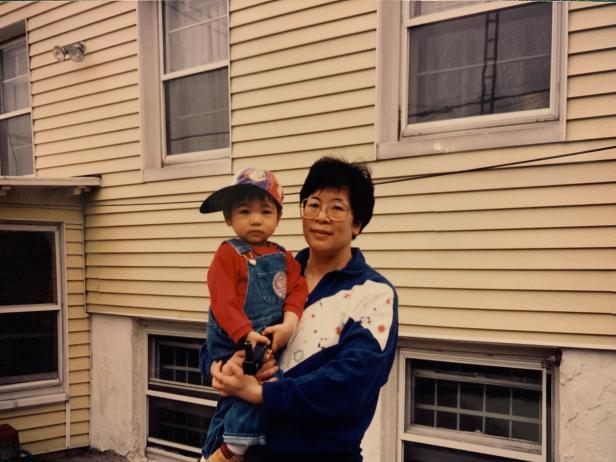
Photo courtesy of Bonnie's
What’s your favorite dish your mom cooked?
Hom Yee Yook Baeng – the steamed minced pork patty, with salted fish. That screams home cooking, and comfort food to me. It’s super tasty, super ugly, flavorful. It’s just very nourishing.
The one that’s in the metal tray! And you can steam it?
Yeah, exactly! It’s basically a giant meatloaf.
I miss that, too. I have to ask my mom to make it for me again.
Related Content:

























